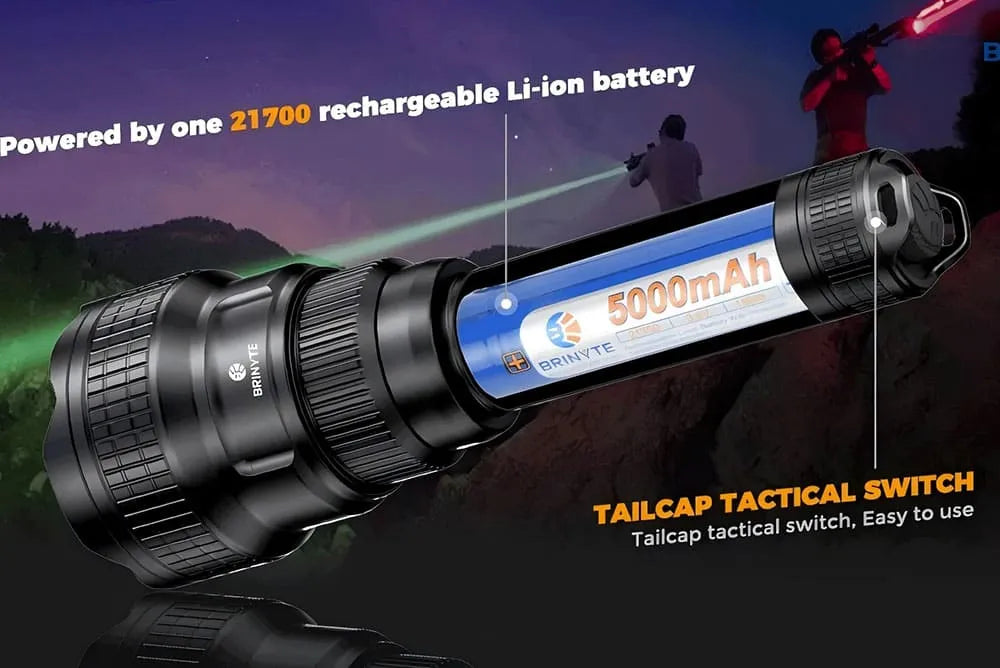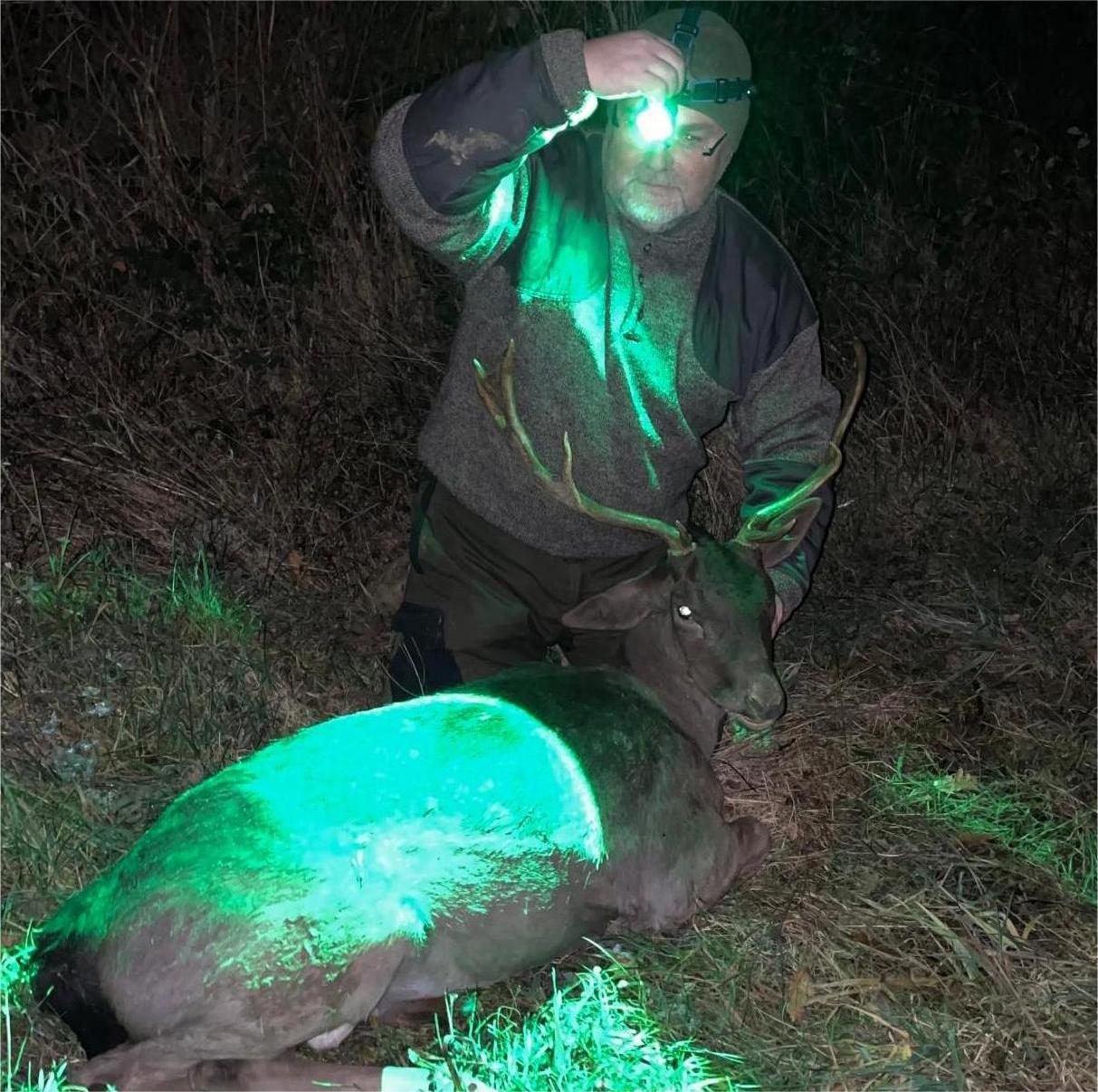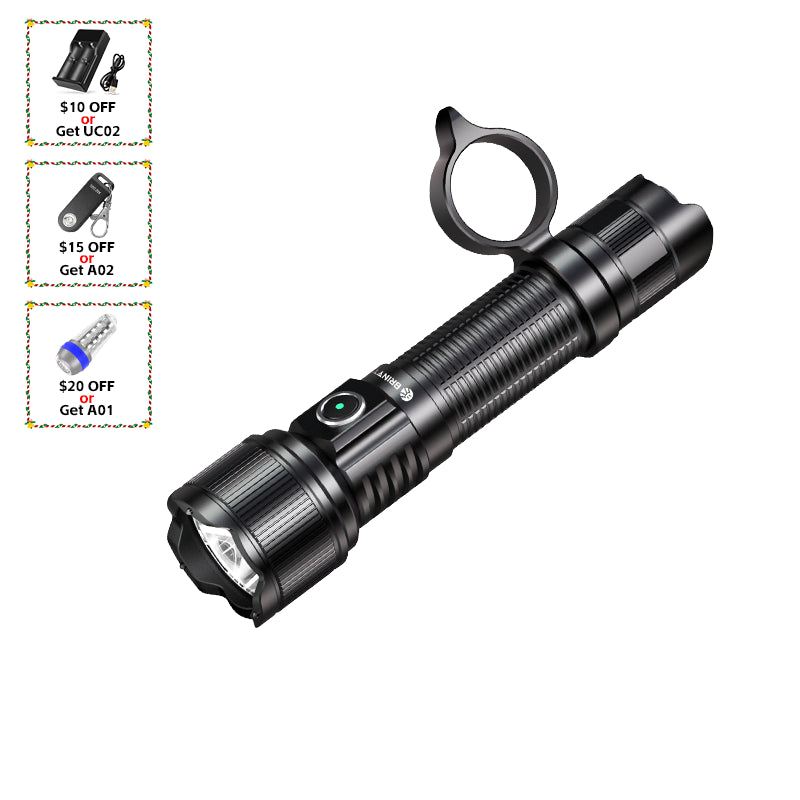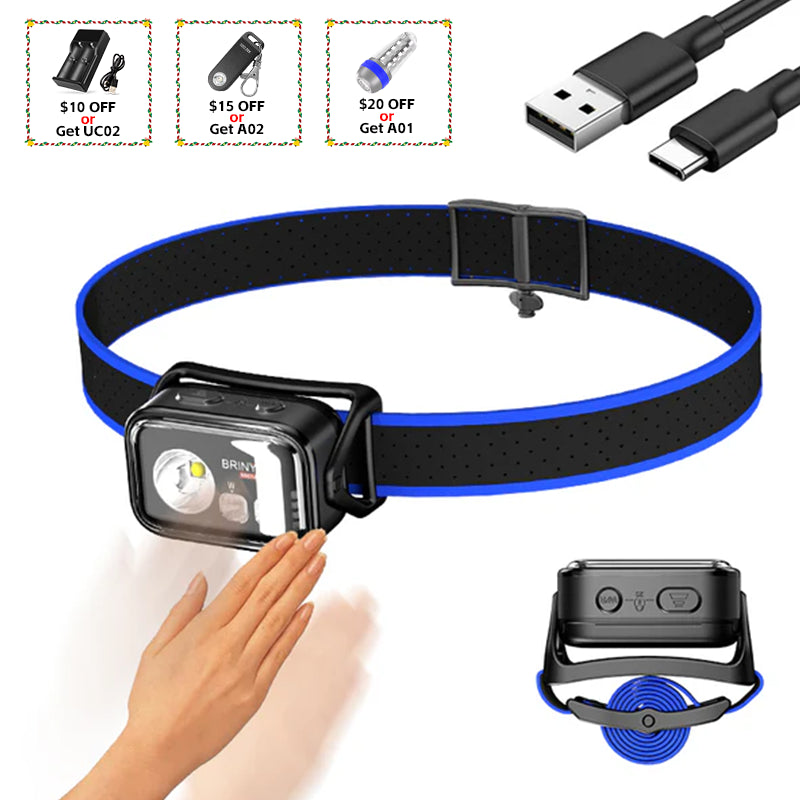Lumen indicates the total amount of visible light the flashlight emits—in simple terms, how bright the light is. But choosing the right brightness isn’t just about the highest number. Selecting the correct flashlight lumen level can save you money and hassle, ensuring the flashlight perfectly meets your needs.
1. What is Lumen? Why Does It Matter?
Lumen (lm) measures the amount of light produced by a flashlight. For example, a 100-lumen light is much dimmer than a 1000-lumen one. But here’s the catch: higher brightness consumes more power and usually results in a heavier, bulkier flashlight.
Why is this important?
If you buy a flashlight with brightness far beyond your needs, you’ll drain batteries quickly, carry extra weight, and spend more money. Conversely, if the light is too dim, you won’t see clearly, whether you’re hiking at night or searching during a power outage.
Choosing the right flashlight lumens means finding a balance between brightness, battery life, size, and weight to fit your specific use case.
2. Typical Lumen Ranges for Flashlights

Flashlight brightness varies greatly. Here are common flashlight lumen ranges:
50 to 300 lumens: Suitable for everyday household use such as reading, finding items, or emergency power outages. These flashlights are compact, affordable, and have good battery life.
300 to 1000 lumens: Ideal for camping, hiking, night running, and other outdoor activities—bright enough with decent runtime.
Above 1000 lumens: Tactical or professional-grade flashlights used for law enforcement, search and rescue, or extreme enthusiasts. They feature powerful beams and long throw distances.
Remember, higher flashlight lumens usually mean shorter battery life—don’t just chase the biggest number.
3. Your Flashlight Lumens Chart Guide
Flashlight Lumens Chart Guide
| Lumen Range | Suitable Use Cases | Key Points |
|---|---|---|
| 10–100 lumens | Close-up tasks, reading, kids’ lights | Low power consumption, long battery life |
| 100–300 lumens | Indoor use, light outdoor activities | Balanced brightness, fits most household needs |
| 300–800 lumens | Camping, hiking, and nighttime outdoor | Bright enough for safety and convenience |
| 800–1500 lumens | Tactical use, law enforcement, search & rescue | Very bright with long-range illumination |
| 1500+ lumens | Professional rescue, extreme environments | Extreme brightness, but high power draw and heavier |
This flashlight lumens chart can help you quickly match your needs to the appropriate brightness level. For example, if you just want a flashlight for home use or emergencies, 100–300 lumens is perfect. If you enjoy hiking or camping, 300–800 lumens gives you brightness and longer runtime.
4. How to Use the Lumen Chart to Buy the Right Flashlight
When buying a flashlight, follow these steps:
Define your main use: Home, outdoor, or professional work?
Balance brightness and runtime: Higher lumens drain batteries faster. Decide how long you need the light to last.
Check durability: Waterproof ratings (like IPX6 or IPX7) and shock-resistant materials ensure reliability.
Choose adjustable brightness if possible: Multiple modes help save battery power.
Beware of “ultra-low price, ultra-high lumen” claims: These are often exaggerated. Always research carefully using trusted flashlight lumens reviews.
5. Brightness vs. Battery Life: Finding the Balance

We all want the brightest light, but higher brightness consumes more power and causes more heat. For everyday use, a medium flashlight lumen level combined with a large battery is ideal—bright and long-lasting. For emergency or tactical needs, prioritize maximum brightness but expect shorter runtime.
Rechargeable batteries are cost-effective and eco-friendly, but for extended outdoor use, carry spare batteries..
6. How to Use the Lumen Chart to Avoid Counterfeit Products
Many flashlights on the market exaggerate their lumen ratings. Before buying:
Verify if the lumen number is reasonable. Ultra-high lumens at low prices and small sizes are suspicious.
Check professional reviews and user feedback from trusted sources.
Buy from reputable brands and authorized dealers for quality assurance and warranty.
Inspect packaging and manuals—genuine products usually have clear, high-quality markings.
7. Recommended Lumens and Tips for Outdoor Sport Flashlights
Different outdoor activities require different flashlight lumens:
Hiking and camping: 300–800 lumens for bright and reliable light.
Night running and cycling: 200–500 lumens, lightweight with good heat dissipation.
Mountaineering and spelunking: Above 800 lumens, needing focused long-range and durability.
Fishing: Around 300 lumens with soft light to avoid disturbing fish.
Also consider:
Waterproof rating of at least IPX6
Prefer rechargeable lithium batteries
Lightweight and portable
Multi-level dimming, SOS, and red light modes are pluses
Summary
Don’t just look at the lumen number when choosing a flashlight. Evaluate your needs carefully. The right flashlight lumens level balances brightness, battery life, weight, and cost, so you can find your ideal lighting companion.
Need help picking the right model? Just let me know!



